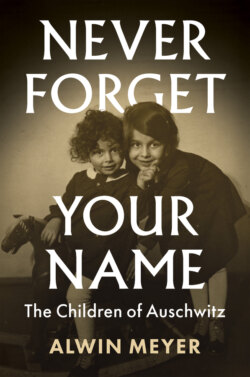Читать книгу Never Forget Your Name - Alwin Meyer - Страница 9
Notes
ОглавлениеApart from the interviews above, there were numerous other unrecorded interviews with the children of Auschwitz and their families. All interviewees also made records, letters, documents and photos available. The interviews and personal documents and correspondence (letters, emails and telephone calls) are not generally mentioned specifically in the notes. The following sources were also used.
(All translations are by Nick Somers, unless otherwise marked.)
1 1 See, in particular, Raul Hilberg, The Destruction of the European Jews (Chicago 1961), and Götz Aly, ‘Endlösung’ – Völkerverschiebung und Mord an den europäischen Juden (Frankfurt am Main 2017).
2 2 Franciszek Piper, ‘Mass Murder’, in Wacław Długoborski and Franciszek Piper, eds., Auschwitz 1940–1945: Central Issues in the History of the Camp, vols. I–V, trans. from Polish by William Brand (Oświęcim 2000), vol. III, pp. 11–52, 205–31; Auschwitz-Birkenau Memorial and Museum (Teresa Świebocka, Jadwiga Pinderska-Lech and Jarko Mensfelt), Auschwitz-Birkenau: The Past and the Present (Oświęcim 2016), pp. 6–12.
3 3 Auschwitz-Birkenau Memorial and Museum, Auschwitz-Birkenau.
4 4 Piper, ‘Mass Murder’; moreover, from the first day of occupation onwards, Jews were ruthlessly murdered in the countries invaded by Nazi Germany, by German ‘Einsatzgruppen’ and ‘Einsatzkommandos’ (mobile killing units), but also by Wehrmacht units. According to the United States Holocaust Museum, 1.3 million Jews were shot by Wehrmacht and SS units or killed in gas trucks on the territory of the former Soviet Union alone: United States Holocaust Museum, Documenting Numbers of Victims of the Holocaust and Nazi Persecution | The Holocaust Encyclopedia (ushmm.org).
5 5 Auschwitz-Birkenau Memorial and Museum, Auschwitz-Birkenau, p. 12 (prepared by Piper).
6 6 Helena Kubica, Geraubte Kindheit – In Auschwitz befreite Kinder [Stolen Childhood: Children Liberated in Auschwitz] (Oświęcim, October 2021), pp. 7, 59. Altogether, 400,000 babies, children and women were registered in Auschwitz, including over 23,500 children and juveniles, almost all of whom were murdered.
7 7 Ibid., pp. 17, 33, 64.
8 8 Helena Kubica, Pregnant Women and Children in Auschwitz (Oświęcim 2010), p. 13; see also George M. Weisz and Konrad Kwiet, ‘Managing Pregnancy in Nazi Concentration Camps: The Role of Two Jewish Doctors’, in Rambam Maimonides Medical Journal (Israel), 9.3 (July 2018).
9 9 Alwin Meyer, Mama, ich höre dich – Mütter, Kinder und Geburten in Auschwitz (Göttingen 2021), pp. 104–62.
